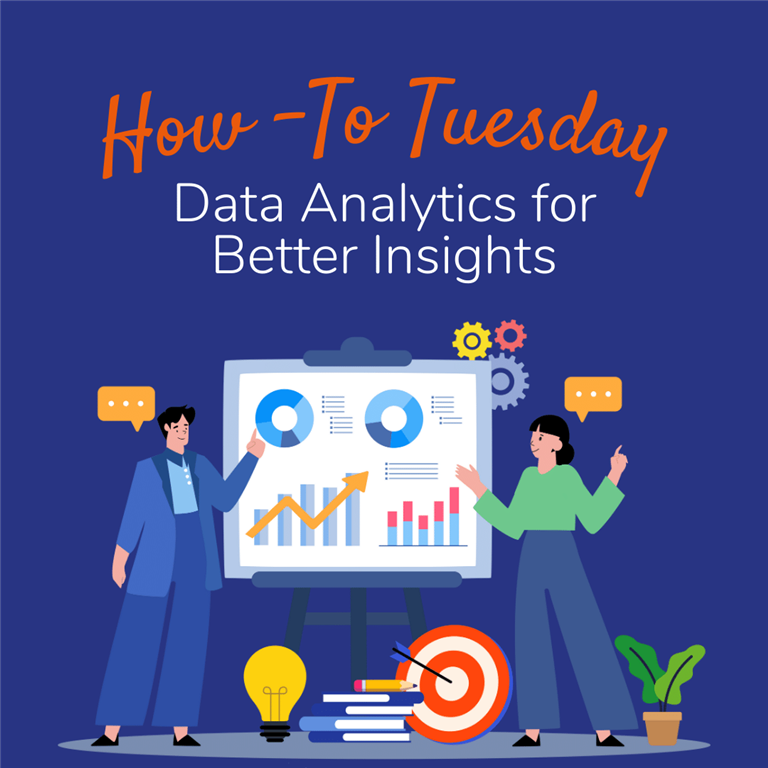How to Tuesday: Use Data Analytics to Drive Better Business Insights
Published Lynne on Tuesday, June 13, 2023 11:00 AM

We’ve stressed how important it is to know your target audience, but how can this be done effectively? Data analysis is the answer. However, while many businesses are able to record this data, some struggle to use it to their advantage.
The purpose of data analysis
By using data analysis to learn about their target audience’s behaviour, businesses can better understand their clients’ needs and habits and use this insight to maximise profits. But first, it’s important to consider what your goals are.
Creating a Roadmap for your business
Once you’ve established your purpose, create a six-step roadmap showing any gaps in your business and technology needs.
1. Choose how you collect data
Decide how your business intends to collect data for analysis. There are several channels to use, including social media networks, search engine data (e.g. Google Analytics), sign-ups and free trial forms, website tracking and more.
2. Evaluate relevance and accuracy
Determine the accuracy of the data collected before investing time and money in analysing it. This will help determine whether your data will contain any valuable insights.
3. Gain better insights
To gain better insights into your company’s data collection processes, think about what you already know. How regularly is this information updated and where is it stored? Is it analysed frequently? Are there any security or confidentiality concerns? Knowing these things will ensure you understand your company’s current practices – including compliance with local and international laws, such as GDPR.
4. Evaluate in-house capabilities
The right skills and experience are needed to scour through data and utilise associated software. Therefore, it’s important to correlate data analytics and IT technologies by expanding your resources across both sectors.
5. Use data visualisation
Once you have collected accurate data, present this in a way that’s understandable for your team. Make sure your data is utilised efficiently by displaying it visually by using graphs and charts.
6. Turn insights into actions
Last but not least, transform your data analysis into successful actions. Incorporate this knowledge into every decision of your marketing strategy and learn how to leverage it to improve your business.
Previous Article Promote Your School Next Article



